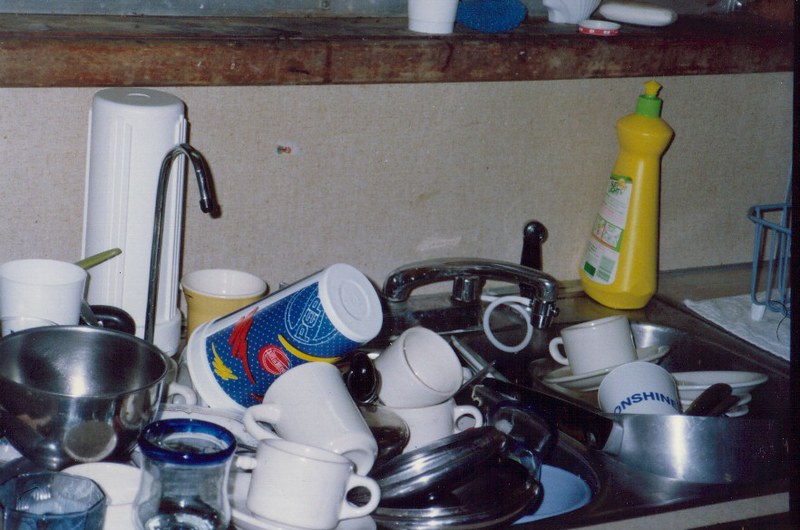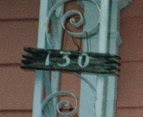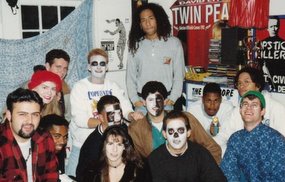
It's been renovated again, and now features amenities like carpeting on the stairs and hardwood floors nearly everywhere else. When I visited recently, courtesy of the contractors who had just finished re-painting inside and out (covering the Mona Lisa with yet another coat of white), the place was sparkling. But there was clearly still work to be done, because the downstairs bathroom looked as grungy as ever. Leaning over the tub to take a picture, I half expected spider crickets to come swarming out of the air vent.
The current asking price on a Pink House rental? Thirty-two hun a month, or roughly twice what I remember our crew last paying when I moved out fifteen years ago. After figuring in inflation, that's nonetheless a steep rate for a five bedroom (or 4 1/2, taking Jay's room into account) student crash-pad. And since today's kids are less likely to want to share bathrooms than the Gen-X'ers who came before them, and even Chapel Hill's sorority girls who deal a little coke on the side have lately fallen on hard times, maybe it's no wonder the place is still available (as of 9/20/09) six weeks after I first saw the for rent sign.
UPDATE 10/25/09 – As Fall Break 2009 for UNC students drew to a close, I drove down North Street on my way to the Franklin Street post office. Lo and behold, no renters yet.
UPDATE 11/26/09 – The day before Thanksgiving, and I finally got the memo that Hell closed down nearly a year ago. While checking out the debris piled at the top of the outside stairs (including Hell's soft pretzel cabinet), evidence the space is still being excavated, I looked up through the chain link fence and saw a bicyclist zoom through the deserted parking lot of the Phi Mu sorority house. Curious, I noticed the rider was headed for the Pink House. Could it be rented? There did seem to be a couple of trucks parked in the back yard.
No, it was only the blogger next door on his way home. I introduced myself and explained I used to know the old couple who previously lived in his house. He was remarkably cool for being accosted at dusk outside his own crib by a quasi-cyber stalker, and said the place is still sans residents. And he thought Sylvia's initial rental asking price this go-round had actually been $3600, thirty-two was at a discount.





































